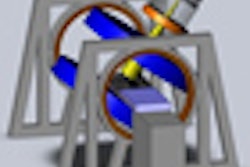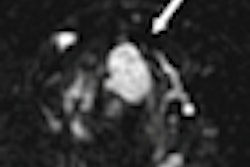The conclusion comes from researchers at NYU Langone Medical Center and the Hospital for Joint Diseases.
"MRI is the imaging modality of choice for the diagnosis of the soft-tissue and osseous injuries that can be seen in the setting of shoulder instability," said lead study author Dr. Soterios Gyftopoulos, an assistant professor of radiology. "MRI can also be used to accurately quantify certain injuries like glenoid bone loss."
The study included 33 consecutive patients with a history of anterior shoulder dislocation who underwent arthroscopy by three surgeons and had either 1.5- or 3-tesla preoperative MRI. Eleven patients had evidence of a Hill-Sachs lesion during a physical exam, while 22 patients did not.
A single blinded reader reviewed each imaging study and documented the presence and size of glenoid bone loss and Hill-Sachs lesions, as well as whether the patient had a labral tear.
The analysis found a statistically significant difference in the amount of glenoid bone loss in the group with evidence of a Hill-Sachs lesion compared with individuals with no evidence of the lesion. However, the researchers found no significant difference between any of the dimensions or overall surface area of Hill-Sachs lesions between the two groups, and no significant difference in the presence of labral tears.
Glenoid bone loss of more than 20% appears to be a moderately sensitive, highly specific threshold for predicting the presence of a Hill-Sachs lesion, the researchers concluded.
"Our study demonstrates the importance of considering the amount of glenoid bone loss along with the Hill-Sachs lesion when evaluating the patient who demonstrates engagement on physical examination," Gyftopoulos added.



















